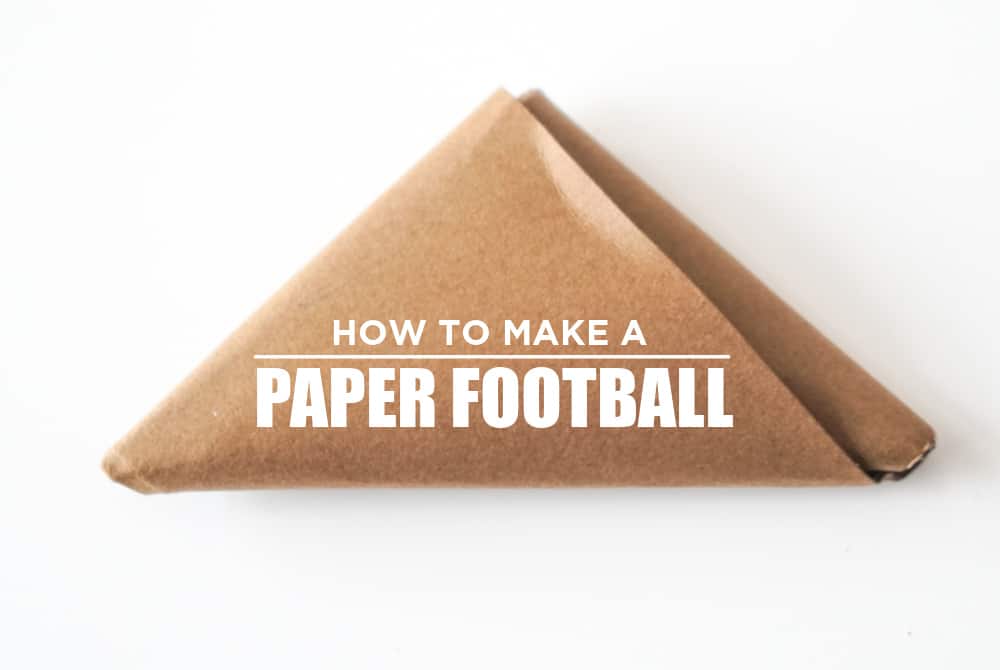Creating a paper football is more than just a childhood pastime; it’s a fun and engaging DIY project that combines precision, creativity, and a dash of competitive spirit. In this comprehensive guide, we’ll walk you through every aspect of how to make a paper football from choosing the right paper to mastering the flick for that perfect field goal. Whether you’re introducing this game to a new generation or reliving school desk tournaments, we’ve covered every detail to help you fold, flick, and win.
Materials You’ll Need to Make a Paper Football
Before we dive into folding techniques and flick strategies, let’s gather the necessary tools:
One standard sheet of paper (8.5 x 11 inches, ideally printer paper)
A flat surface for folding and gameplay
Optional: Pen or markers to decorate your football
No glue, tape, or scissors are needed. The beauty of the classic paper football lies in its simplicity.
Step-by-Step Instructions on How to Fold a Paper Football
Follow these instructions meticulously to ensure your paper football is aerodynamic, balanced, and flick-ready.
1. Fold the Paper in Half Lengthwise
Take your 8.5 x 11-inch sheet of paper.
Fold it lengthwise (hotdog style) so the long edges meet.
Crease it sharply, then unfold it.
Tear or cut along the crease to create two long rectangles. You’ll only need one half.
2. Start the Triangle Fold
Take the strip and fold down the top right corner to form a triangle.
Continue folding that triangle down the length of the strip, aligning each fold with the edges.
This step will resemble folding a flag, and you should maintain tight, precise creases for best results.
3. Tuck in the Remaining Flap
Once you reach the end of the strip, you’ll likely have a small piece of paper sticking out.
Carefully tuck this flap into the pocket formed by one of the triangle folds.
Make sure everything is secure—this keeps the football from unraveling during play.
4. Flatten and Sharpen the Edges
Press down on the football to flatten it slightly.
Run your fingers along the edges to sharpen and strengthen the structure.
The more defined your edges, the better your paper football will glide through the air and land accurately.
How to Play Paper Football – Rules and Setup
Now that your paper football is complete, it’s time to play. The game requires two players, a table, and your crafted football.
Game Setup
Sit across from your opponent at a table with a smooth, flat surface.
Place the paper football at one end of the table.
Each player takes turns flicking the football toward the opposite end, trying to land it hanging slightly over the edge without falling off.
Scoring Rules
Touchdown: If the football hangs over the edge without falling, it’s worth 6 points.
Field Goal: After a touchdown, the player gets one chance to flick the ball through the opponent’s goalpost (made with fingers), which adds 1 extra point.
Turnover: If the football flies off the table or falls short, possession switches.
First to 21 points wins the game. You can adjust this score limit for shorter or longer games.
Pro Tips for a Perfect Flick
Mastering the flick is essential for consistent success. Here’s how to hone your technique:
Use your index finger and thumb to create a snapping motion.
Anchor your non-dominant hand to steady the ball.
Aim for a smooth, quick flick that sends the football gliding.
Practice different angles to control distance and spin.
Avoid excessive force—a gentle, accurate flick usually outperforms brute strength.
Customize Your Paper Football for Maximum Fun
While function comes first, style makes the game more exciting. Here are some fun customizations:
Draw logos of your favorite NFL teams.
Add yard lines or end zone designs using colored markers.
Create a scoreboard using a separate sheet of paper or a small whiteboard.
These personal touches make each game feel like a miniature Super Bowl.
Advanced Paper Football Variations
Once you’ve mastered the basics, take your paper football game to the next level:
1. Tournament Style Play
Host a tournament with brackets.
Compete in rounds with time limits or score caps.
2. Distance Challenge
Measure how far each flick goes.
Longest successful flick wins.
3. Trick Shot Mode
Set up obstacles using household items like cups, books, or cans.
Try to land or bounce the football in creative ways.
These variations add longevity and replay value to the classic desk sport.
Common Mistakes to Avoid
Even a small misstep can ruin a game. Here’s what to steer clear of:
Poor folds: Sloppy or uneven folds result in lopsided footballs.
Weak tucks: If the final flap isn’t secured tightly, the football can unravel mid-game.
Over-flicking: Too much force will send the ball off the table.
Take your time during the folding phase and practice control during gameplay.
Educational Benefits of Playing Paper Football
Beyond just fun, playing paper football offers surprising educational perks:
Improves hand-eye coordination
Teaches basic physics (trajectory, force, friction)
Encourages friendly competition and sportsmanship
Promotes fine motor skills in younger players
It’s an engaging way to combine STEM concepts and play, making it ideal for classroom settings.
Conclusion
The paper football is a timeless activity that transforms a simple sheet of paper into hours of entertainment. By following these detailed instructions, you can fold the perfect paper football, master your flicking technique, and engage in exciting games with friends, classmates, or coworkers. With endless variations and simple materials, this game is a go-to for quick fun, anywhere and anytime.



















